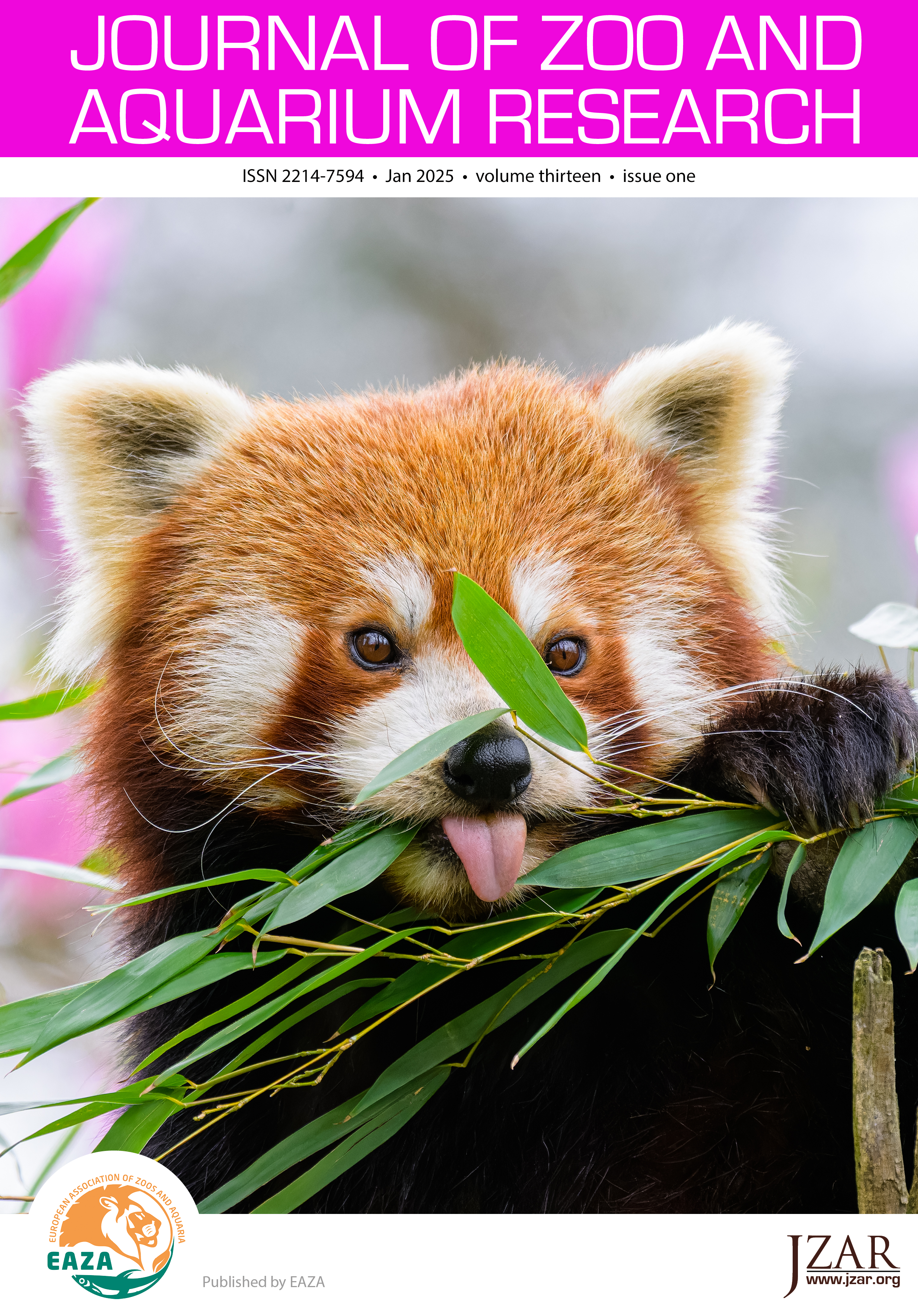Current practices in dietary management and disease incidence in red pandas Ailurus fulgens across European zoos
DOI:
https://doi.org/10.19227/jzar.v13i1.842Keywords:
diet, feeding, husbandry guidelines, red pandaAbstract
The Endangered red panda Ailurus fulgens is commonly kept in European zoos. While it exists primarily on bamboo in its natural habitat, zoo diets historically have differed, which has been associated with health problems. A red panda diet survey was distributed across 106 European zoos in 19 countries in summer 2023. All collections feed fresh bamboo daily, as recommended in best practice feeding guidelines (BPG). However, three quarters of collections still feed commercial fruits, a practice advised against by European BPG for nearly a decade. Pelleted or extruded foods are commonly used to supplement red panda diets (79%), the majority of which contain considerably less fibre than bamboo. This mirrors published recommendations including the BPG, suggesting that in diet formulation past husbandry practices are more important than biological plausibility. A ‘panda cake’ product was fed by 48% of zoological collections but has been advised against by BPG and other sources due to links to poor dental health. A minority of collections (<7%) feed animal products including fish and dairy products. Eggs are fed in 38% of zoos. Skin and dental problems were the most commonly recorded health problems in zoo red panda, identified by 43% and 42% of zoos respectively. The findings show that while some BPG recommendations have been widely adopted, others have not, to possible detrimental effects on animal health and welfare. The comparison of nutrient concentrations in bamboo and the nutrient recommendations for red panda compound feeds in the BPG show that even BPG should be regularly assessed critically, ideally based on biological plausibility alongside husbandry tradition. More than thirty years after the published request in 1989 that a high-fibre product (i.e., crude fibre at 20-25% dry matter) should be produced for red pandas, such a diet has become available for the first time to our knowledge, indicating a certain inertia in zoo feeding practices Future study of barriers to zoo uptake of dietary BPG would be useful for creating intervention points to promote change. Following BPG for species care is a quantifiable metric that could be added to welfare assessment or zoo standards.
Downloads
##submission.additionalFiles##
Published
Issue
Section
License
JZAR fulfils the DOAJ definition of open access and provides free and open access to the full text of all content without delay under a Creative Commons licence. The copyright holder of JZAR publications grants usage rights to third parties, allowing for immediate free access to the work and permitting any user to read, download, copy, distribute, print, search, or link to the full texts of articles.







